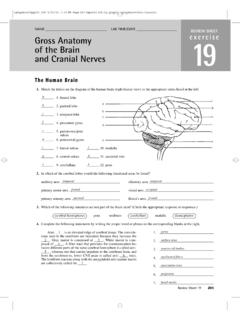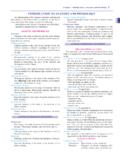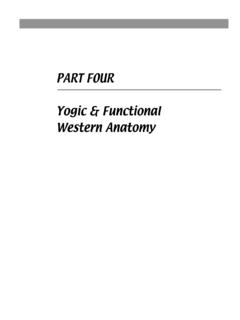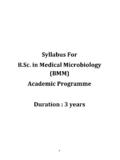Transcription of St Year B.P.T. SUBJECT: HUMAN ANATOMY (Subject Code BPT ...
1 1 1St Year SUBJECT: HUMAN ANATOMY (Subject Code BPT- 101) Goal To provide the student with the necessary Anatomical knowledge & skills to practice as a qualified Physiotherapist Subject Title & Code HUMAN ANATOMY (BPT- 101) Duration Total Hours Theory Practical New: 210 Hours 135 75 Total Hrs/week Lectures Practicals Seminars 8 5hrs/week 3hrs/week Method of Assessment Theory and Practical Objectives- 1] MUSCULO SKELETAL i) The student should be able to identify & Describe Anatomical aspects of muscle bones & joints, & to understand and Analyze movements. ii) To understand the Anatomical basis of various clinical conditions trauma, deformities, pertaining to limbs & spine.
2 Iii) To be able to localize various surface land-marks; iv) To understand & describe the mechanism of posture & gait the Anatomical basis of abnormal gait. 2 2] In NEURO ANATOMY i) to identify & describe various parts of fore brain, Midbrain, Hind-brain Brain stem, courses of cranial nerves; functional components, course distribution. Anatomical bases of clinical lesions: ii) to describe the source & course of spinal tracts; iii) to describe blood circulation of iv) be able to identify the components of various Trans sections. 3] THORAX to identify & describe various components of the contents of the Thorax with special emphasis to tracheo-bronchial tree, & cardio pulmonary system.
3 4] CIRCULATORY I) be able to identify & describe the source & course of major arterial venous & Lymphatic system, with special emphasis to extremities, Spine & Thorax 5] PSYCHO-MOTOR i) to be able to demonstrate the movements of various joints ii) distinguish cranial & peripheral nerves iii) distinguish major arteries, veins & Lymphatics with special emphases to extremities, & spine. Syllabus 3 1]-GENERAL ANATOMY --------------------------------- ------------------------10hours Including Histology Basic tissues like epithelial, Connective, muscular, nervous, system. 2. Musculo Skeletal ANATOMY - (General).. (10 hrs) a) Anatomical positions of body, axes, planes, common anatomical terminologies (Groove, tuberosity, trochanters etc).
4 B) Connective tissue classification. c) Bones- Composition & functions, classification and types according to morphology and development. d) Joints-definition-classification, structure of fibrous, cartilaginous joints, blood supply and nerve supply of joints. e) Muscles origin, insertion, nerve supply and actions A. Upper Extremity : (35 hrs) a. Osteology : Clavicles, Scapula, Humerus, Radius, Ulna, Carpals, Metacarpals, Phalanges. b. Soft parts: Breast, pectoral region, axilla, front of arm, back of arm, cubital fossa, front of fore arm, back of fore arm, palm, dorsum of hand, muscles, nerves, blood vessels and lymphatic drainage of upper extremity. c. Joints : Shoulder girdle, shoulder joint, elbow joints, radio ulnar joint, wrist joint and joints of the hand.
5 D. Arches of hand, skin of the palm and dorsum of hand. 4 B. Lower (25 hrs) a. Osteology : Hip bone, femur, tibia, fibula, patella, tarsals, metartarsals and phalanges. b. Soft parts: Gluteal region, front and back of the thigh (Femoral triangle, femoral canal and inguinal canal), medial side of the thigh (Adductor canal), lateral side of the thigh, popliteal fossa, anterior and posterior compartment of leg, sole of the foot, lymphatic drainage of lower limb, venous drainage of the lower limb, arterial supply of the lower limb, arches of foot, skin of foot. c. Joints: Hip Joint, Knee joint, Ankle joint, joints of the foot. C. Trunk & Pelvis .. (20 Hrs) a. Osteology: Cervical, thoracic, lumbar, sacral and coccygeal vertebrae and ribs b.
6 Soft tissue: Pre and Para vertebral muscles, intercostals muscles, anterior abdominal wall muscles, Inter-vertebral disc. c. Pelvic girdle and muscles of the pelvic floor 3. Regional ANATOMY .. (80 Hrs) Following is region-wise distribution Thorax: a) Cardio Vascular System ..(10hrs) Mediastinum: Divisions and contents Pericardium: Thoracic Wall: position, shape and parts of the heart; conducting System; blood Supply and nerve supply of the heart; 5 names of the blood vessels and their distribution in the body region wise. b) Respiratory system( 15 hrs) Outline of respiratory passages Pleura and lungs: position, parts, relations, blood supply and nerve supply; Lungs emphasize on bronchopulmonary segments Diaphragm: Origin, insertion, nerve supply and action, openings in the diaphragm, intercostal muscles and Accessory muscles of respiration: Origin, insertion, nerve supplyand action.
7 Abdomen: ..(8 Hrs) Peritoneum: Parietal peritoneum, visceral peritoneum, folds of peritoneum, functions of peritoneum. Large blood vessels of the gut Location, size, shape, features, blood supply, nerve supply and functions of the following: stomach, liver, spleen, pancreas, kidney, urinary bladder, intestines, gall bladder. Pelvis:Position, shape, size, features, blood supply and nerve supply of the male and female reproductive system. Endocrine glands: .. (5hrs) Position, shape, size, function, blood supply and nerve supply of the following glands :Hypothalamus and pituitary gland, thyroid glands, parathyroid glands, Adrenal glands, pancreatic islets, ovaries and testes, pineal glands, thymus.
8 Head and Neck: ..(20 hrs) Osteology : Mandible and bones of the skull. Soft parts : Muscles of the face and neck and their nerve and blood supply-extra, ocular 6 muscles, triangles of the neck, gross ANATOMY of eyeball, nose, ears and muscles & joint 5. Neuro ANATOMY ..(50 hrs) Organization of Central Nervous system - Spinal nerves and autonomic nervous system mainly pertaining to cardiovascular, respiratory and urogenital system, Cranial nerves, Peripheral nervous system, Peripheral nerve, Neuromuscular junction , Sensory end organs , Central Nervous System Spinal segments and areas,Brain Stem, Cerebellum,Inferior colliculi, Superior Colliculi, Thalamus, Hypothalamus, Corpus striatum, Cerebral hemisphere, Lateral ventricles, Blood supply to brain, Basal Ganglia, The pyramidal system, Pons, medulla, extra pyramidal systems, Anatomical integration SCHEME OF EXAMINATION THEORY 80 MARKS + Int.
9 Assessment 20 marks Total .. 100 Marks Model question paper 80 Marks Section A) Q1) -based on Single best response .. [20 x 1] --- 20 marks [20 minutes] This question should include topics covered in syllabus Section B) Q2) Answer any Five out of Six [ 3 x 5] ------------------ 15 marks This question should include i] Digestive ii] /uro-genital iii] reproductive system iv] special senses eye /ear/skin v] circulatory system. 7 Q3) Answer any 3 out of 4 .. [ 5 x 3] ------------------ 15 marks This question should include i] Thorax ii] soft parts upper limb iii] soft part lower limb iv] soft parts Thorax /spine / neck Section C) Q4) Compulsory based Musculo Skeletal system [including Kinesiology] 15marks Q5) should be based on Neuro- ANATOMY [including cranial nerves with emphasis to V,VII, VIII, IX & XII nerves.
10 15 marks OR Q5) ..15 marks PRACTICAL 80 MARKS + Internal assessment 20 marks = Total 100 marks should include 1] Spots ---------------------------------------- ---------------------------------------- --- 60 marks 2] Viva ---------------------------------------- ---------------------------------------- ----- 15 marks Journal ---------------------------------------- ---------------------------------------- ----- 05 marks INTERNAL ASSESSMENT THEORY: Two exams Terminal and prelims of 80 marks each TOTAL 160 marks Section A) Q1) on Single best response [20 x 1] -- 20marks 8 This question should include topics covered in syllabus- Section B) )-Answer any Five out of Six [3 X 5]-------------- 15marks This question should include i]-Digestive ii]-uro-genital iii]-reproductive system iv] - special senses-eye/ear/skin v]-circulatory system ) - Answer any 3 out of 4 [5 X 3] ---------------------- 15 marks This question should include i]-Thorax ii]-soft parts upper limb iii]-soft part-lower limb iv]-soft parts Thorax/ spine / neck Section C) )













